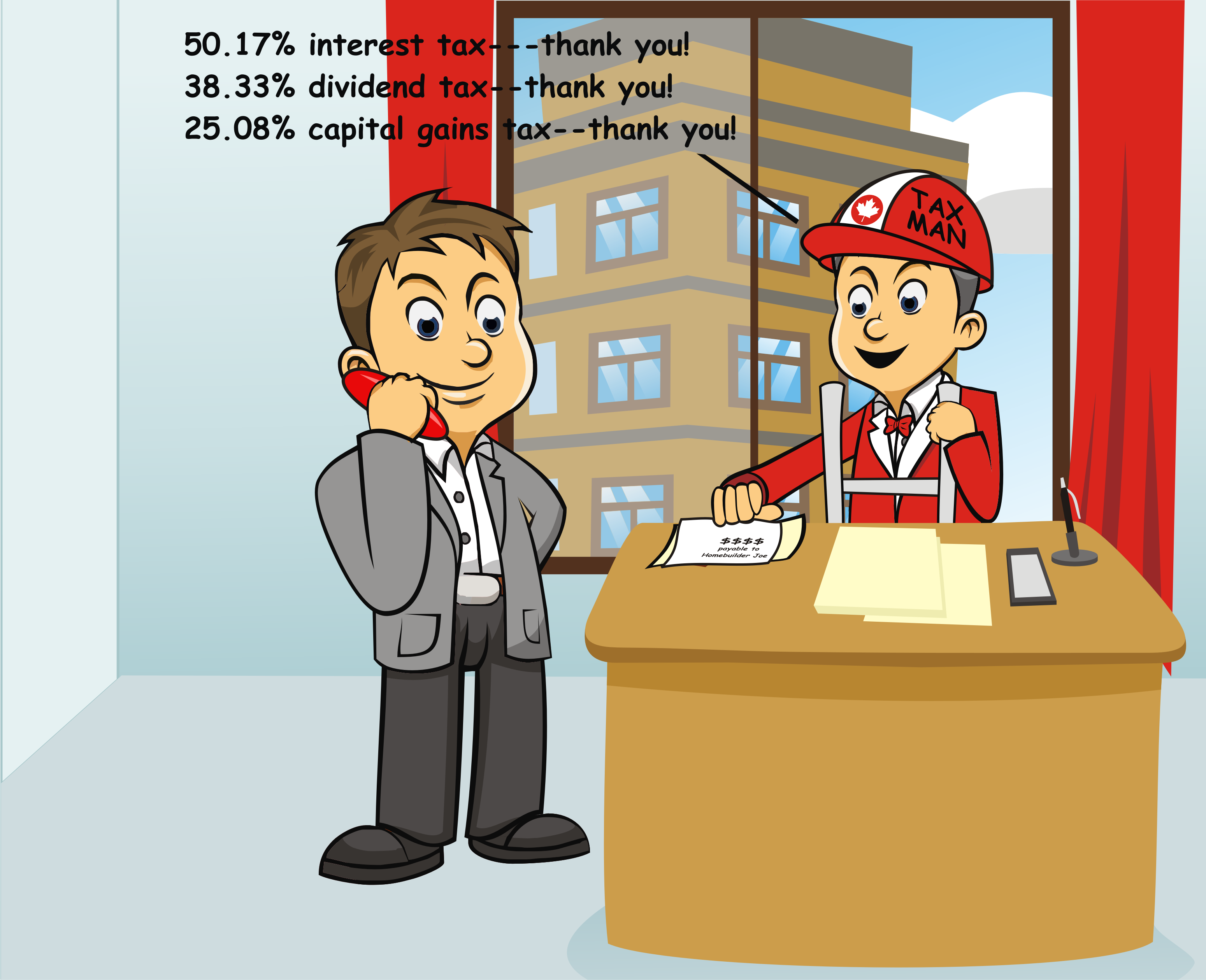
Joe is a successful home builder in the Greater Toronto Area for over 15 years. He is 45 years old, married to Ann who is 43 and has three children. Joe’s entire family is very active in the day-to-day operation of his development company.
The Challenge for Joe and His Family
Each time he completes a new project, his company earnings skyrocket. After he pays off his employees, business debt, and other expenses, he finds himself with a boatload of surplus cash. Joe puts his surplus cash into his corporate bank account. Since his corporate account is holding passive investments such as; cash, mutual funds, stocks, bonds, and real estate, he is paying the highest corporate tax rate; 50.17% on interest income, 38.33% on his dividends and 25.08% on capital gains.
Joe and Ann are looking for an effective strategy to transfer some of their money from a taxable environment to a non-taxable environment. Eventually, they would also like to transfer whatever is left over to their three children tax-free and reduce the capital gains tax on their corporate shares at death.



Homebuilder Joe had a great year. He made 4.5 million on his last project and wanted to do what he knew was right and put 1 million away for his family’s future. He wanted his hard earned money to grow, but every time the government would come in and take close to half of his earnings. Homebuilder Joe wasn’t happy with his new partner.
Solution-The Corporate Transfer Plan
With the help of their insurance advisor Joe and Ann purchase a single life whole life policy on each of their lives from a highly-rated Canadian company. The insurance amount was calculated based on the amount of money they wished to transfer into the plan from their corporate account.
➢ Joe decided to make a one time lump sum transfer of $1 million for his plan
➢ Anne decided to make a one time lump sum transfer of $500,000 for her plan
Their holding company was named as both the owner and the beneficiary of the policy, otherwise potential taxable shareholder benefits could arise.
Once they completed and passed the insurance company’s medical exam the insurance policies were issued. The policies would include a tax-advantaged savings plan attached to a tax-free death benefit.



- Joe’s insurance policy created an immediate tax-free death benefit to Ann in the amount of 3.5 million.
- At age 65 his insurance benefit grew to 4.3 million.
- Included in the plan was a tax-advantaged savings portion that grew to 1.8 million when Joe reached retirement age 65.
- Ann’s insurance policy created an immediate tax-free death benefit to Joe in the amount of $1.9 million.
- At age 65 her insurance benefit grew to $2.3 million.
- Also included in Ann’s plan was the tax-advantaged $1 million when she reached retirement age 65.
If Joe and Ann withdrew 50% from their cash portion (i.e. supplement their retirement income), their beneficiary would still be left with a tax-free death benefit of close to $3.2 million and $1.9 million respectively.
(CAUTION: If Joe and Ann were to cash out early they would receive less money back compared to his total policy cash values. Cash withdrawals may be taxable when withdrawn from insurance plan and will reduce the death benefit dollar per dollar).
In addition to tax-deferred cash value growth in the plan, the life insurance proceeds are paid to the company on a tax-free basis because the company is able to flow the insurance proceeds to the beneficiary through the Capital Dividend Account (CDA). Any amount over the CDA balance will be subject to tax.
If they did nothing at least one-third or more of their holding company’s assets could be paid in taxes when left to his children.
(Note: Joe and Ann could realize significant annual savings by having his corporation own the policy and pay for the premiums. Generally, the corporate tax rate on his business is lower than his personal tax rate. That means it would require less pre-tax income to fund the premiums through the corporation compared to paying for them personally. His personal tax rate was 53.53% while his corporation’s tax rate was closer to 26%).
The Benefits
- Joe and Ann’s investments are transferred from a taxable investment vehicle into a tax-deferred environment, reducing their company’s overall tax bill.
- The life insurance proceeds (up to the balance of his company’s CDA) are paid as tax-free dividends to their beneficiary.
- Since Joe and Ann are using tax paid money from within the company to pay premiums on a company owned policy, there was no tax payable on such payments.
